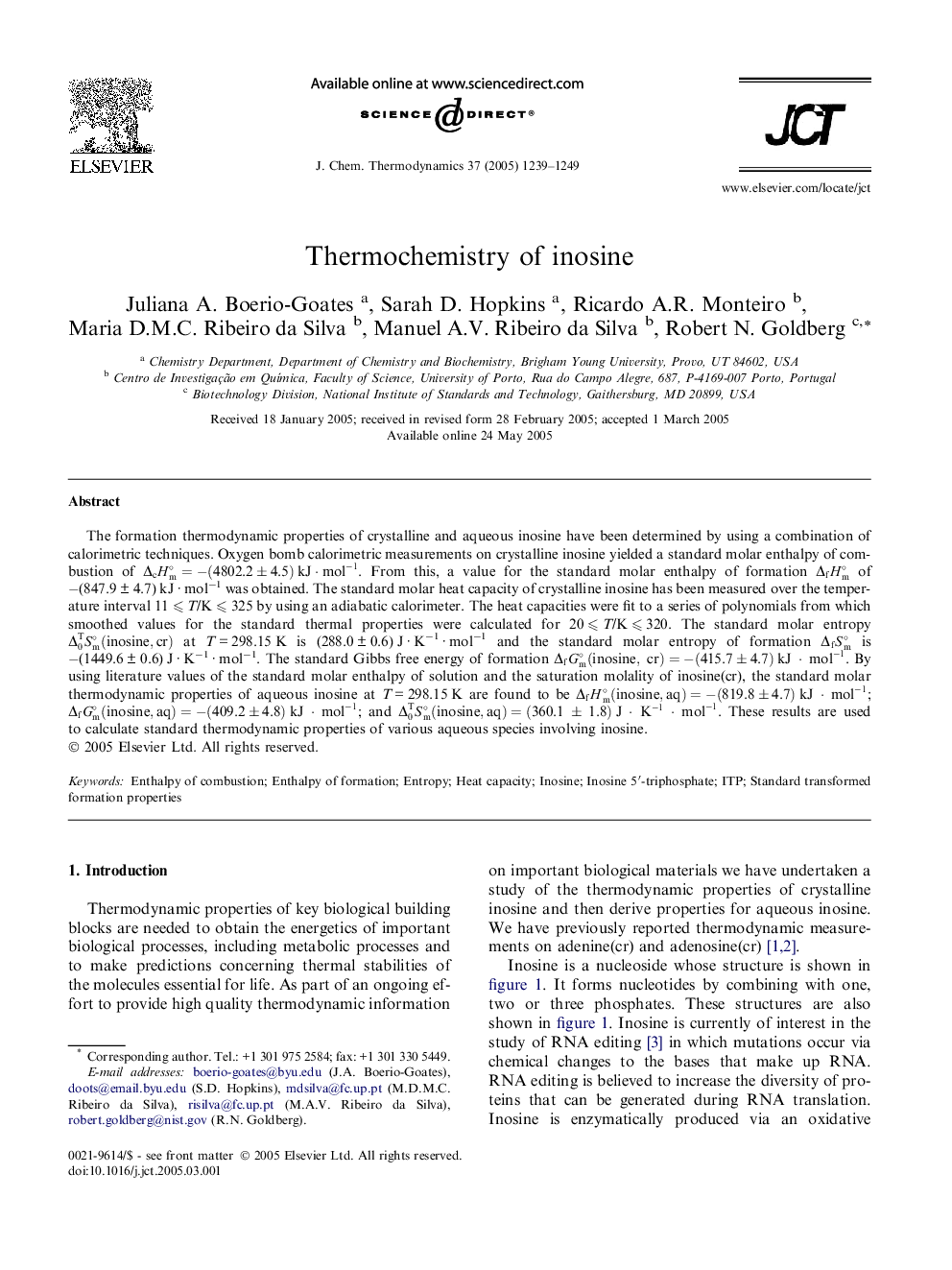| Article ID | Journal | Published Year | Pages | File Type |
|---|---|---|---|---|
| 9633501 | The Journal of Chemical Thermodynamics | 2005 | 11 Pages |
Abstract
The formation thermodynamic properties of crystalline and aqueous inosine have been determined by using a combination of calorimetric techniques. Oxygen bomb calorimetric measurements on crystalline inosine yielded a standard molar enthalpy of combustion of ÎcHmâ=-(4802.2±4.5)kJ·mol-1. From this, a value for the standard molar enthalpy of formation ÎfHmâ of â(847.9 ± 4.7) kJ · molâ1 was obtained. The standard molar heat capacity of crystalline inosine has been measured over the temperature interval 11 ⩽ T/K ⩽ 325 by using an adiabatic calorimeter. The heat capacities were fit to a series of polynomials from which smoothed values for the standard thermal properties were calculated for 20 ⩽ T/K ⩽ 320. The standard molar entropy Î0TSmâ(inosine,cr) at T = 298.15 K is (288.0 ± 0.6) J · Kâ1 · molâ1 and the standard molar entropy of formation ÎfSmâ is â(1449.6 ± 0.6) J · Kâ1 · molâ1. The standard Gibbs free energy of formation ÎfGmâ(inosine,cr)=-(415.7±4.7)kJ·mol-1. By using literature values of the standard molar enthalpy of solution and the saturation molality of inosine(cr), the standard molar thermodynamic properties of aqueous inosine at T = 298.15 K are found to be ÎfHmâ(inosine,aq)=-(819.8±4.7)kJ·mol-1; ÎfGmâ(inosine,aq)=-(409.2±4.8)kJ·mol-1; and Î0TSmâ(inosine,aq)=(360.1±1.8)J·K-1·mol-1. These results are used to calculate standard thermodynamic properties of various aqueous species involving inosine.
Keywords
Related Topics
Physical Sciences and Engineering
Chemical Engineering
Chemical Engineering (General)
Authors
Juliana A. Boerio-Goates, Sarah D. Hopkins, Ricardo A.R. Monteiro, Maria D.M.C. Ribeiro da Silva, Manuel A.V. Ribeiro da Silva, Robert N. Goldberg,
